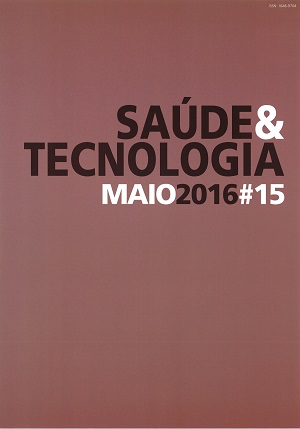Comparative study of three tests for stereopsis: TNO®, Stereo Acuity Test Fly® and StereoTAB® in students in higher school
DOI:
https://doi.org/10.25758/set.1341Keywords:
Stereopsis, Local stereopsis, Global stereopsis, Binocular visionAbstract
Stereopsis is the perception of depth based on retinal disparity. Global stereopsis depends on the process of random dot stimuli and local stereopsis depends on contour perception. The aim of this study was to correlate three stereopsis tests: TNO®, StereoTAB®, and Fly Stereo Acuity Test® and to study the sensitivity and correlation between them, using TNO® as the gold standard. Other variables such as a near convergence point, vergences, symptoms, and optical correction were correlated with the three tests. Forty-nine students from Escola Superior de Tecnologia da Saúde de Lisboa (ESTeSL), aged 18-26 years old were included. The stereopsis mean (standard-deviation-SD) values in each test were: TNO® = 87.04’’ ±84.09’’; FlyTest® = 38.18’’ ±34.59’’; StereoTAB® = 124.89’’ ±137.38’’. About the coefficient of determination: TNO® and StereoTAB® with R2=0.6 e TNO® and FlyTest® with R2=0.2. Pearson correlation coefficient shows a positive correlation between TNO® and StereoTAB® (r=0.784 with α=0.01). The Phi coefficient shows a strong and positive association between TNO® and StereoTAB® (Φ=0.848 with α=0.01). In the ROC Curve, the StereoTAB® has an area under the curve bigger than the FlyTest® with a sensitivity of 92.3% for 94.4% of specificity, so it means that the test is sensitive with good discriminative power.
Downloads
References
Giaschi D, Narasimhan S, Solski A, Harrison E, Wilcox LM. On the typical development of stereopsis: fine and coarse processing. Vision Res. 2013;89:65-71.
Lee SY, Koo NK. Change of stereoacuity with aging in normal eyes. Korean J Ophthalmol. 2005;19(2):136-9.
Momeni-Moghadam H, Kundart J, Ehsani M, Gholami K. The comparison of stereopsis with TNO and Titmus tests in symptomatic and asymptomatic university students. J Behav Optom. 2012;23(2):35-9.
Witz N, Hess RF. Mechanisms underlying global stereopsis in fovea and periphery. Vision Res. 2013;87:10-21.
Fricke TR, Siderov J. Stereopsis, stereotests, and their relation to vision screening and clinical practice. Clin Exp Optom. 1997;80(5):165-72.
Paralkar S, Kothari M, Shah K. Comparison of Lang test, Randot test & TNO test in the assessment of stereo-acuity of normal population. In: AIOC 2011 – 69th AIOS Annual Conference, Ahmedabad (India), 3-6 February, 2011. Available from: http://slideplayer.com/slide/1598337/
Yamada T, Scheiman M, Mitchell GL. A comparison of stereopsis testing between red/green targets and polarized targets in children with normal binocular vision. Optometry. 2008;79(3):138-42.
Afonso A, Nunes C. Estatística e probabilidades: aplicações e soluções em SPSS. Lisboa: Escolar Editora; 2011. ISBN 9789725922996
Zaroff CM, Knutelska M, Frumkes TE. Variation in stereoacuity: normative description, fixation disparity, and the roles of aging and gender. Invest Ophthalmol Vis Sci. 2003;44(2):891-900.
von Noorden GK, Campos EC. Binocular vision and ocular motility: theory and management of strabismus. 6th ed. St. Louis: Mosby; 2002. ISBN 0323011292
Downloads
Published
Issue
Section
License
Copyright (c) 2022 Saúde e Tecnologia

This work is licensed under a Creative Commons Attribution-NonCommercial-NoDerivatives 4.0 International License.
The journal Saúde & Tecnologia offers immediate free access to its content, following the principle that making scientific knowledge available to the public free of charge provides greater worldwide democratization of knowledge.
The journal Saúde & Tecnologia does not charge authors any submission or article processing charges (APC).
All content is licensed under a Creative Commons CC-BY-NC-ND license. Authors have the right to: reproduce their work in physical or digital form for personal, professional, or teaching use, but not for commercial use (including the sale of the right to access the article); deposit on their website, that of their institution or in a repository an exact copy in electronic format of the article published by Saúde & Tecnologia, provided that reference is made to its publication in Saúde & Tecnologia and its content (including symbols identifying the journal) is not altered; publish in a book of which they are authors or editors the total or partial content of the manuscript, provided that reference is made to its publication in Saúde & Tecnologia.







